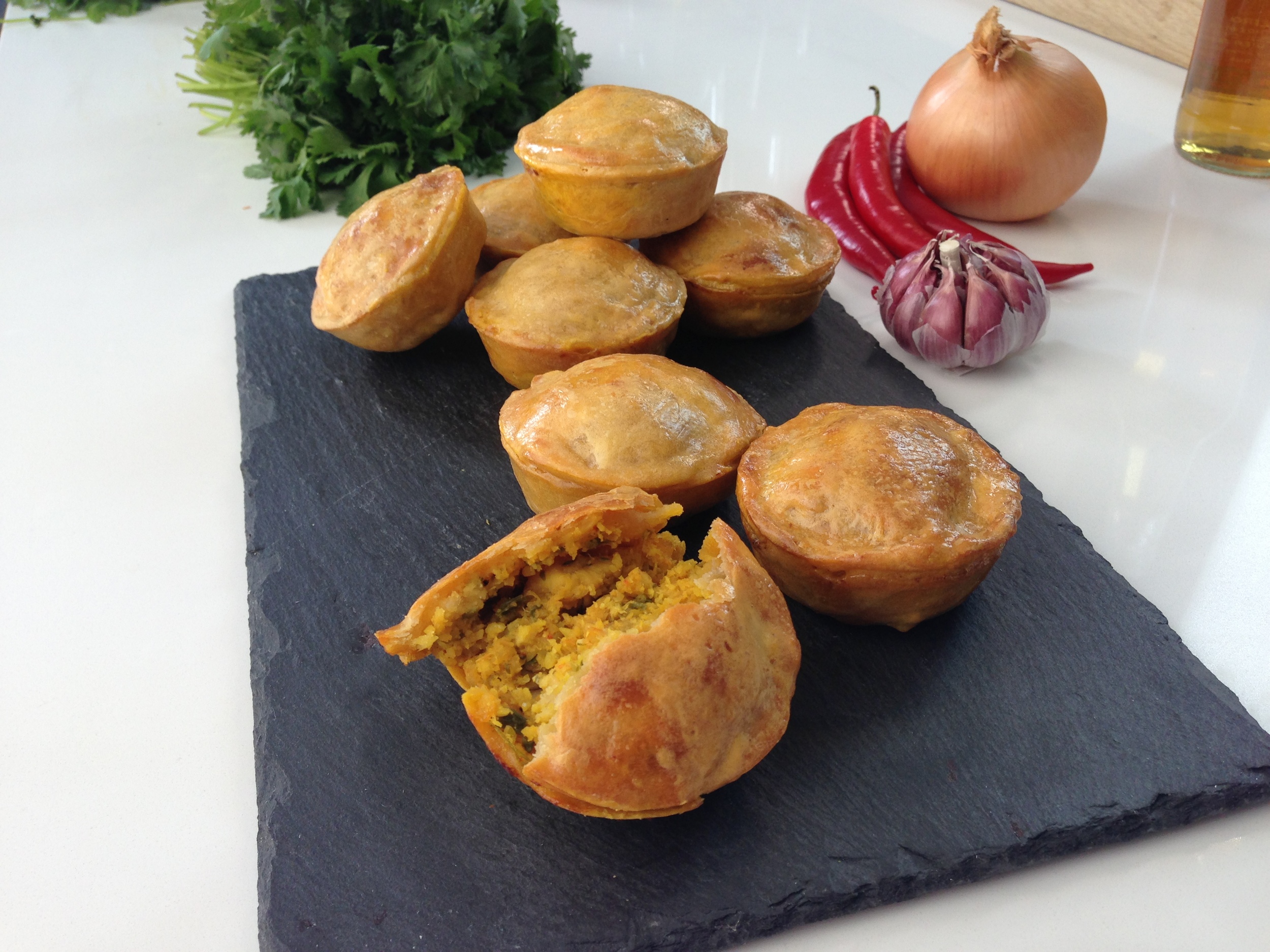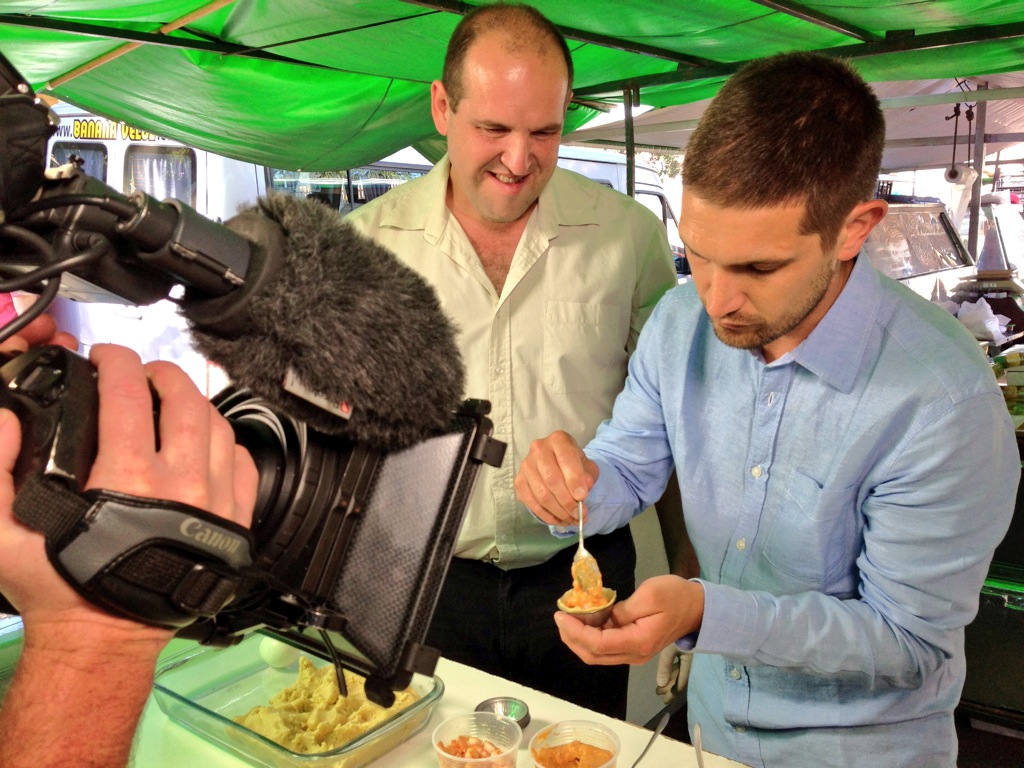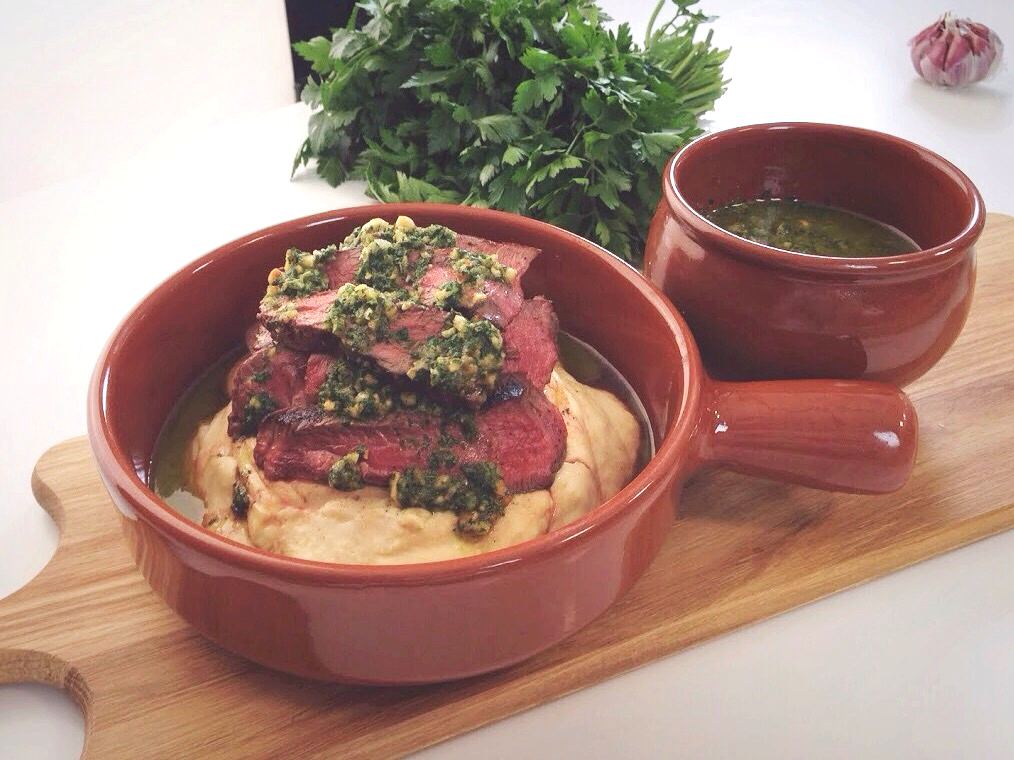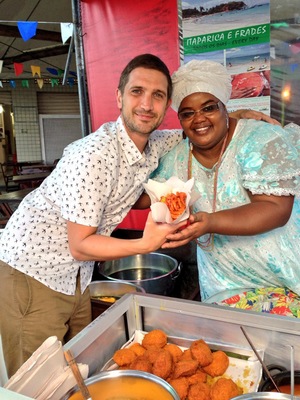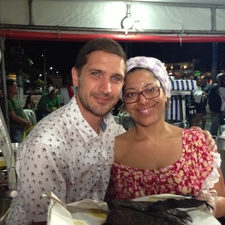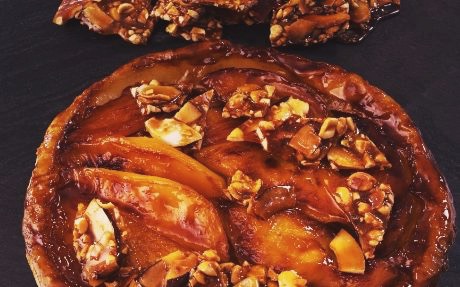BBQ Prawns with Roast Chilli Salsa
Andy Bates
It's getting closer to kick off here in Salvador. There is a real party vibe from all the football fans. There is no other country that loves their football like they do here in Brazil, and I was just about to watch a live match. I hooked up with Paulo, he's a big supporter of the local street food and the local team Bahia Esporte Clube. I had some amazing street food outside the stadium, but I wanted Paulo to show me around inside the stadium. Paulo explains to me that Itaipava Arena Fonte Nova is brand new built for the 2014 World Cup and then goes on to tell me that he an extra surprise for me, the best seats in the arena! But before, we queued for grilled prawns. Have you ever seen that before, prawns at a football match? And they were amazing!
He was not allowed to tell me all the ingredients, but I will say this is one of the best football snacks I have ever had, and it gives me an idea to do something with prawns.
INGREDIENTS
- 24 raw tiger prawns, shells on
- 3 cloves garlic, peeled and crushed
- 1 teaspoon chilli flakes
- 1 tablespoon olive oil
- Sea salt and black pepper
FOR THE SALSA:
- 4 ripe tomatoes
- 2 red chillies
- 4 spring onions
- 1 clove garlic, peeled and crushed
- 1 teaspoon chipotle paste
- Juice of 1 to 2 limes
- Pinch caster sugar
- Small bunch coriander, roughly chopped
- Lime wedges, to serve
METHOD
Toss the prawns with the garlic, chilli flakes and oil, cover with clingfilm and refrigerate for 1 to 2 hours, or overnight if possible.
Meanwhile, make the salsa. Preheat the barbeque to a high heat, lay the tomatoes, chillies and spring onions on the grill and cook for 3 to 4 minutes until charred and starting to soften.
Remove from the grill and transfer to a chopping board. Roughly chop everything together then tip into a liquidiser and add the remaining ingredients. Pulse to a rough purée then season to taste and set aside. Meanwhile remove the prawns from the fridge and bring to room temperature. Lay the prawns on the grill and cook for 1 to 2 minutes on each side until pink. Transfer to a platter and serve with the salsa and lime wedges.





